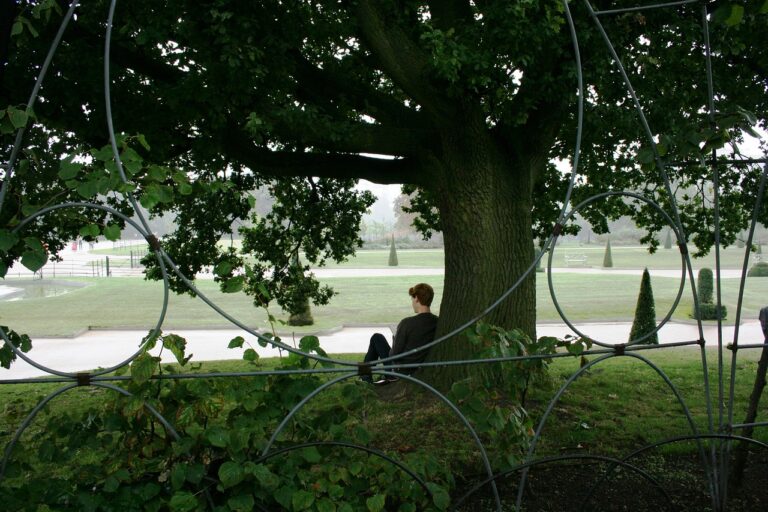Exploring Restorative Justice Practices in Schools: Building Positive School Climate
Restorative justice practices in schools provide a proactive approach to addressing conflict and fostering positive relationships among students and staff. By focusing on understanding the harm that has been done and working collaboratively to repair relationships, restorative justice promotes accountability and empathy within the school community. This approach not only leads to decreased instances of aggressive behavior and discipline issues but also contributes to creating a more inclusive and supportive school environment where all individuals feel valued and heard.
Furthermore, incorporating restorative justice practices in schools helps to teach important social and emotional skills that are essential for students’ personal and academic development. By engaging in restorative processes, students learn how to communicate effectively, resolve conflicts peacefully, and build trust with their peers. These skills not only benefit students in their current school setting but also equip them with valuable life skills that they can carry with them into future endeavors.Ultimately, by prioritizing restorative justice practices in schools, educators can actively contribute to creating a safer, more positive, and nurturing learning environment for all members of the school community.
Understanding the Impact of Restorative Justice on School Climate
Restorative justice practices have shown significant promise in reshaping the overall climate within schools. By placing an emphasis on empathy, accountability, and communication, these approaches foster a sense of community and understanding among students, teachers, and administrators. This shift towards a more inclusive and supportive environment ultimately leads to reduced conflict, improved relationships, and a stronger sense of belonging for all members of the school community.
Through the implementation of restorative justice programs, schools have witnessed a decline in disciplinary incidents and a noticeable increase in overall student well-being. Traditional punitive measures often result in a culture of fear and mistrust, whereas restorative justice focuses on repairing harm and restoring relationships. As a result, students are more likely to take ownership of their actions, develop crucial conflict resolution skills, and actively contribute to a harmonious and respectful school climate.
• Restorative justice practices emphasize empathy, accountability, and communication
• Foster a sense of community and understanding among students, teachers, and administrators
• Leads to reduced conflict, improved relationships, and a stronger sense of belonging within the school community
Through restorative justice programs:
• Schools have seen a decline in disciplinary incidents
• Increase in overall student well-being
• Focus on repairing harm and restoring relationships rather than punitive measures
• Students are more likely to take ownership of their actions
• Develop crucial conflict resolution skills
• Contribute to a harmonious and respectful school climate.
Implementing Restorative Justice Programs in Schools
Restorative justice programs are gaining momentum in schools across the country as educators recognize the positive impact they have on building a supportive and equitable learning environment. By implementing restorative practices in schools, students and staff are provided with opportunities to address conflicts and harmful behaviors in a constructive manner that promotes accountability and healing. These programs emphasize repairing the harm caused by actions rather than focusing solely on punishment, fostering a sense of community and fostering empathy among all members of the school community.
When integrating restorative justice programs in schools, it is crucial to provide comprehensive training for both students and staff to ensure successful implementation. Training sessions should focus on building skills in effective communication, active listening, and conflict resolution to empower individuals to navigate difficult situations in a restorative manner. Additionally, establishing clear guidelines and protocols for utilizing restorative practices ensures consistency and fairness in addressing conflicts and promoting a positive school climate where every voice is heard and respected.
What are restorative justice practices in schools?
Restorative justice practices in schools focus on repairing harm caused by conflicts through dialogue, empathy, and accountability rather than punishment.
How can restorative justice impact school climate?
Restorative justice can improve school climate by fostering positive relationships, reducing conflict, and promoting a sense of community and belonging among students and staff.
What are some examples of restorative justice programs that can be implemented in schools?
Some examples of restorative justice programs in schools include peer mediation, restorative circles, and conferences between those involved in a conflict to discuss the impact and find resolutions.
How can schools effectively implement restorative justice programs?
Schools can effectively implement restorative justice programs by providing training for staff, involving students in decision-making processes, and creating a supportive environment where restorative practices are valued and practiced consistently.
What are the benefits of implementing restorative justice programs in schools?
The benefits of implementing restorative justice programs in schools include reduced suspension rates, improved academic performance, enhanced relationships, and a safer and more inclusive school environment for all students.







